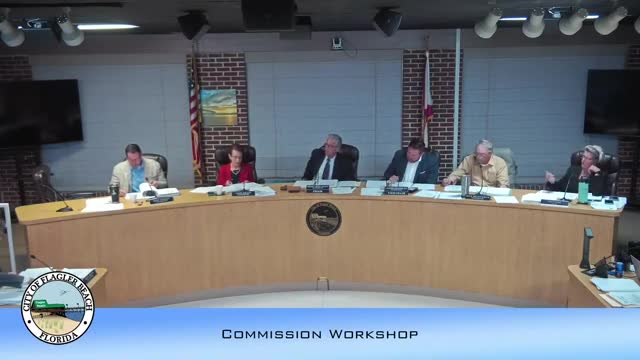Height regulations spark heated debate over rooftop access
August 23, 2024 | Flagler Beach City, Flagler County, Florida
This article was created by AI summarizing key points discussed. AI makes mistakes, so for full details and context, please refer to the video of the full meeting. Please report any errors so we can fix them. Report an error »

In a recent government meeting, significant discussions centered around proposed changes to building height regulations, particularly concerning rooftop features and elevator bulkheads. The commission reviewed a draft that delineated exceptions for architectural and mechanical features, establishing specific height limits for each category.
Key changes included the relocation of elevator bulkheads from mechanical elements, which are capped at 43 feet, to a new category that allows for a maximum height of 49 feet. This adjustment was made to accommodate the necessary space for elevator mechanics, particularly in buildings with ten-foot first floors. The rationale behind this increase was to ensure that elevators could function properly without compromising design aesthetics.
The commission also discussed the limitations on rooftop architectural features, narrowing the allowable area from a flat square footage to 15% of the building's linear facade. This change aims to provide a more stringent control over how these features are integrated into building designs, ensuring they complement rather than dominate the skyline.
Concerns were raised by Mayor King and other members regarding the implications of allowing rooftop access, which necessitates elevators for ADA compliance. The mayor questioned whether the new regulations would effectively prevent future height issues, suggesting that eliminating rooftop access altogether could mitigate the need for elevator bulkheads and the associated height increases.
The meeting highlighted the ongoing tension between architectural innovation and community standards, as officials grapple with balancing aesthetic considerations against practical building requirements. The proposed changes will be further evaluated, with the potential for additional modifications to address the concerns raised during the discussions.
Key changes included the relocation of elevator bulkheads from mechanical elements, which are capped at 43 feet, to a new category that allows for a maximum height of 49 feet. This adjustment was made to accommodate the necessary space for elevator mechanics, particularly in buildings with ten-foot first floors. The rationale behind this increase was to ensure that elevators could function properly without compromising design aesthetics.
The commission also discussed the limitations on rooftop architectural features, narrowing the allowable area from a flat square footage to 15% of the building's linear facade. This change aims to provide a more stringent control over how these features are integrated into building designs, ensuring they complement rather than dominate the skyline.
Concerns were raised by Mayor King and other members regarding the implications of allowing rooftop access, which necessitates elevators for ADA compliance. The mayor questioned whether the new regulations would effectively prevent future height issues, suggesting that eliminating rooftop access altogether could mitigate the need for elevator bulkheads and the associated height increases.
The meeting highlighted the ongoing tension between architectural innovation and community standards, as officials grapple with balancing aesthetic considerations against practical building requirements. The proposed changes will be further evaluated, with the potential for additional modifications to address the concerns raised during the discussions.
View full meeting
This article is based on a recent meeting—watch the full video and explore the complete transcript for deeper insights into the discussion.
View full meeting